Human design is a powerful system that can help you unlock your unique potential and discover your purpose in life. Based on a combination of astrology, I Ching, Kabbalah, and quantum physics, human design provides a map of your energetic makeup and shows you how to live in alignment with your true nature.
In this blog post, we will explore the basics of human design, including the five types, the nine centers, and the different channels and gates. We will also discuss how human design can help you make better decisions, improve your relationships, and live a more fulfilling life. I have provided a list of my favourite resources for further research and exactly where and how you can discover your own unique deisgn.
The Five Types of Human Design
The first step in understanding your human design is to determine your type. There are five types of human design: manifestor, generator, manifesting generator, projector, and reflector.
Manifestors are about 9% of the population and are here to initiate and start things. They have a powerful energy that can be intimidating to others, and they often feel the need to push through obstacles to get things done. Manifestors are designed to act independently and are not here to follow anyone else’s rules.
Generators are about 37% of the population and are here to respond to what is presented to them. They have a sustainable energy that can keep going for a long time, as long as they are doing something they love. Generators are designed to be masters of their craft and to follow their inner guidance to find work that is meaningful to them.
Manifesting generators are a combination of manifestors and generators, and make up about 33% of the population. They are here to initiate and respond to what is presented to them, and they have a quick, spontaneous energy that can move them from one thing to the next. Manifesting generators are designed to follow their gut instincts and move quickly to get things done.
Projectors are about 20% of the population and are here to guide others. They have a penetrating energy that can see through people and situations, and they are designed to be experts in their field. Projectors are not designed to work as hard as generators, but rather to work smarter and guide others to use their energy effectively.
Reflectors are about 1% of the population and are here to reflect the energy of the people around them. They have a chameleon-like energy that can adapt to any situation, and they are designed to be the mirrors that reflect back to others what is going on. Reflectors are not here to initiate or respond, but rather to wait for the right timing and reflect back the energy of the collective.
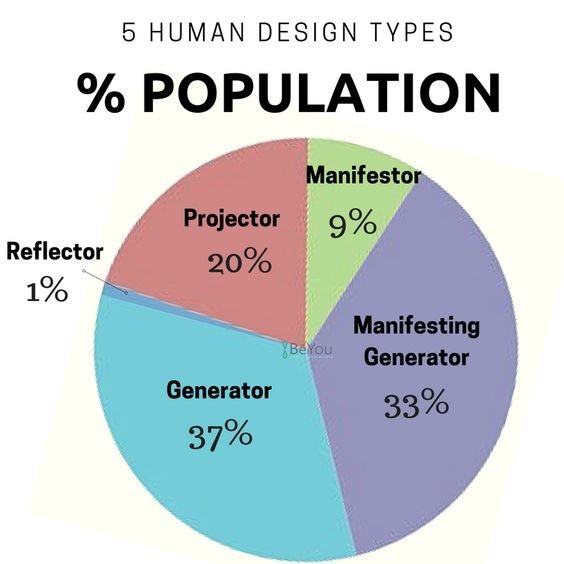
The Nine Centers of Human Design
The next step in understanding your human design is to look at the nine centers. Each center represents a different aspect of your energy, and understanding how they function can help you live in alignment with your true nature.
The first center is the head center, which is associated with inspiration and ideas. When this center is defined, you have a consistent source of inspiration and can come up with new ideas easily. When it is undefined, you can be prone to overthinking and feeling uncertain about your decisions.
The second center is the ajna center, which is associated with analysis and understanding. When this center is defined, you have a consistent way of processing information and making sense of the world. When it is undefined, you can struggle with decision-making and can be prone to feeling overwhelmed by too much information.
The third center is the throat center, which is associated with communication and expression. When this center is defined, you have a consistent way of expressing yourself and can be a powerful communicator. When it is undefined, you can struggle to find your voice and may feel like you are not being heard.
The fourth center is the heart center, which is associated with love and connection. When this center is defined, you have a consistent source of love and can radiate warmth and generosity. When it is undefined, you can struggle with self-worth and may feel like you need validation from others to feel loved.
The fifth center is the solar plexus center, which is associated with emotions and feelings. When this center is defined, you have a consistent emotional landscape and can experience deep feelings and sensitivity. When it is undefined, you can be prone to emotional ups and downs and may feel like you are at the mercy of your emotions.
The sixth center is the sacral center, which is associated with life force energy and vitality. When this center is defined, you have a consistent source of energy and can work for long periods of time without getting tired. When it is undefined, you can struggle to find sustainable energy and may feel exhausted by too much work.
The seventh center is the splenic center, which is associated with intuition and survival instincts. When this center is defined, you have a consistent source of intuition and can make decisions based on your gut instincts. When it is undefined, you can struggle to trust your instincts and may second-guess your decisions.
The eighth center is the identity center, which is associated with your sense of self and personal power. When this center is defined, you have a consistent sense of self and can radiate personal power and confidence. When it is undefined, you can struggle with identity and may feel like you are constantly trying to fit in with others.
The ninth center is the root center, which is associated with adrenaline and stress. When this center is defined, you have a consistent source of adrenaline and can thrive under pressure. When it is undefined, you can struggle with stress and may feel like you are constantly in a state of anxiety.
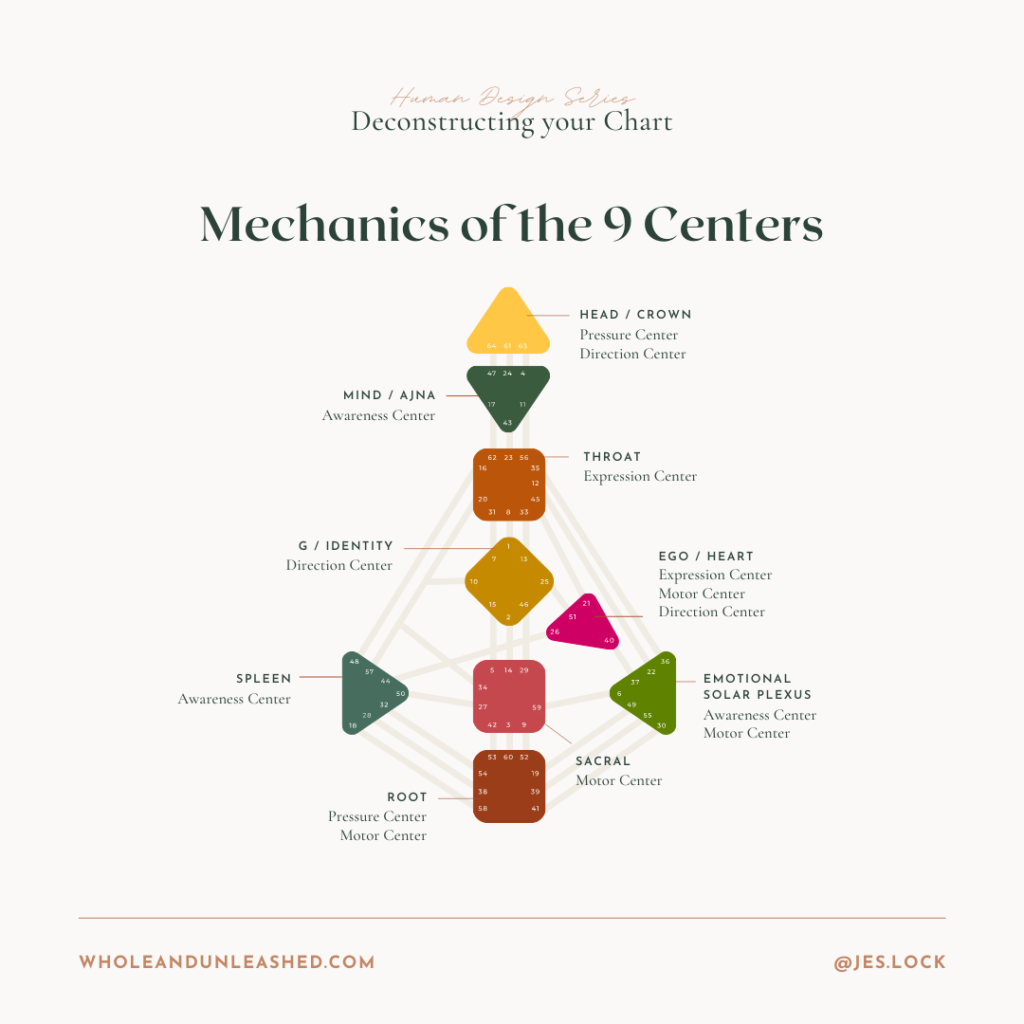
Channels and Gates in Human Design
In addition to the five types and nine centers, human design also includes channels and gates. Channels are the pathways that connect the centers, and gates are the individual points within those channels. Understanding the channels and gates in your human design can provide insights into your unique strengths and challenges.
For example, if you have the channel of the investigator (gate 20-34) in your human design, you may have a natural ability to research and investigate to uncover deeper truths. If you have the channel of the martyr (gate 21-45) in your human design, you may have a tendency to sacrifice yourself for others and struggle with setting healthy boundaries.
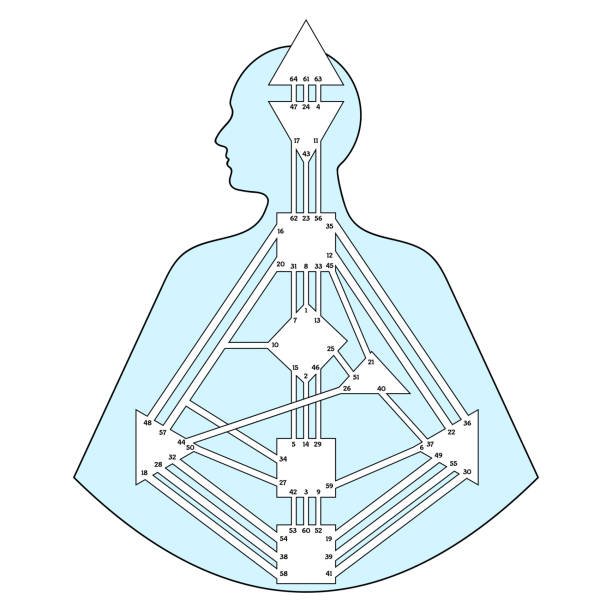
Using Human Design to Improve Your Life
Understanding your human design can provide insights into your unique strengths and challenges, and can help you live a more fulfilling life. Here are a few ways that you can use human design to improve your life:
- Make decisions based on your strategy and authority. Each type in human design has a specific strategy and authority that can help them make better decisions. For example, generators are designed to respond to what is presented to them, while manifestors are designed to initiate and inform others of their decisions. By understanding your strategy and authority, you can make decisions that are aligned with your true nature.
- Improve your relationships by understanding your design and the design of others. Each type and center in human design has unique strengths and challenges, and understanding these can help you relate to others more effectively. For example, if you are a projector, you may be more effective in your relationships by waiting for the invitation to guide others, rather than trying to initiate yourself.
- Live in alignment with your purpose. Understanding your human design can provide insights into your unique purpose in life. By living in alignment with your true nature, you can fulfill your purpose and live a more fulfilling life. For example, if you have the channel of the teacher (gate 3-60) in your human design, you may be naturally inclined to share your knowledge and wisdom with others. By recognizing this strength, you can seek out opportunities to teach and mentor others, and find greater fulfillment in your work and relationships.
- Use your energy wisely. Understanding the energy dynamics in your human design can help you use your energy more wisely and effectively. For example, if you have an undefined sacral center, you may need to take regular breaks to recharge your energy throughout the day, rather than pushing through exhaustion and burning out.
- Embrace your uniqueness. Human design emphasizes the importance of embracing your unique design and living in alignment with your true nature. By accepting and celebrating your unique strengths and challenges, you can cultivate greater self-love and acceptance, and live a more authentic and fulfilling life.
How do I Discover my Human Design?
- Find your birth information: You will need your exact birth time, date, and location to determine your human design chart. This information can usually be found on your birth certificate, or you can ask your parents or family members.
- Calculate your chart: There are several websites and software programs available that can calculate your human design chart based on your birth information. Some of my favourite options include www.myhumandesign.com, www.mybodygraph.com, and jovianarchive.com.
- Understand your chart: Once you have your chart, you can begin to explore and understand its different components. There are many resources available online and in books that can help you interpret your chart and understand its implications for your life. See below for some of my top picks.
- Experiment and integrate: Human design is a practical tool for self-discovery and personal growth, so it’s important to experiment with its principles and integrate them into your life. This may involve making changes to your daily routine, relationships, or decision-making process based on your human design type and energy dynamics.
- Seek guidance and support: If you’re new to human design, it can be helpful to seek guidance and support from a certified human design professional or community. They can provide additional insights and guidance on how to apply human design principles to your life and help you navigate any challenges or questions that arise.
Recommendations
Books
There are many books available on human design, but here are some of the most popular and widely recommended ones:
- The Definitive Book of Human Design by Lynda Bunnell, Ra Uru Hu, and Robert Allan Krakower
- Understanding Human Design: The New Science of Astrology: Discover Who You Really Are by Karen Curry
- Human Design: Discover the Person You Were Born to Be by Chetan Parkyn and Steve Nobel
- The Book of Destinies: Discover the Life You Were Born to Live by Chetan Parkyn and Carola Eastwood
These books provide a comprehensive overview of human design, including its history, theory, and practical applications. They also offer detailed explanations of the different types, centers, channels, and gates, and provide guidance on how to use this knowledge to live a more fulfilling and authentic life. Whether you are new to human design or a seasoned practitioner, these books are a valuable resource for gaining a deeper understanding of this powerful tool for self-discovery and personal growth.

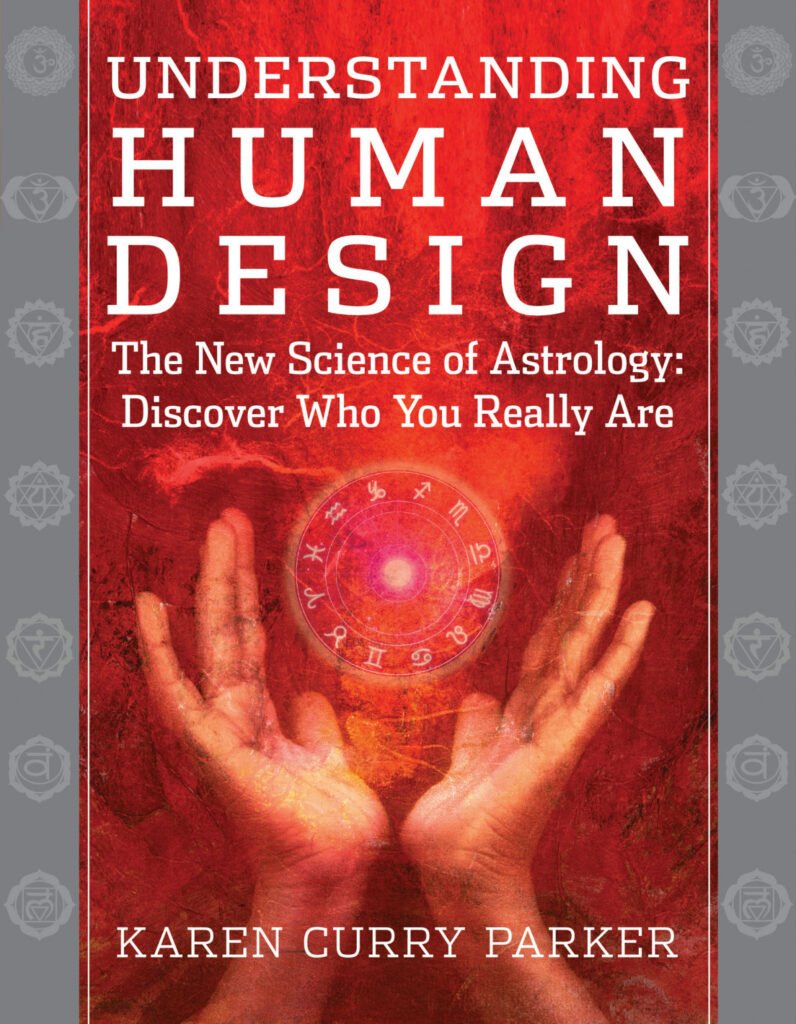
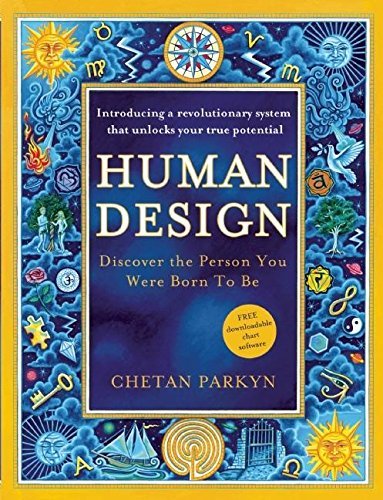

Podcasts
- DayLuna Human Design Podcast with Shayna Cornelius & Dana Stiles
- Human Deisgn with Jenna Zoe





Leave a Reply